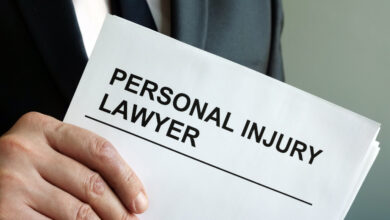The Role of Accessible Websites in SEO For Lawyers

Law firm SEO is more than just backlinks and keywords; it is about establishing your company as the industry leader in the firm you work.
It is about making sure that your expertise is the first thing people see when they seek legal guidance by aligning your online presence with the requirements and intentions of your target audience. If you are looking for website design for personal injury lawyers, contact an SEO expert.
How can accessible websites in SEO help law firms grow?
Prioritising website accessibility can help your business in two distinct ways: it will boost website performance and keep you out of legal trouble. Above all else, it is the right thing to do.
The majority of us use the Internet on a daily basis for employment, shopping, socialising, informational purposes, and service procurement. “The average American consumes almost half a day staring at a screen,” or roughly “10 hours and 39 minutes each day,” according to an audience evaluation by the Nielsen Company. It is not fair to exclude anyone from such an everyday aspect of modern life.
The website of your company is an image of your values, reputation, and brand. The majority of law firms—all of which we have had the honour of working with—are driven by a solid set of rules, particularly community service, client care, and expanding access to legal services through pro bono work. Online interactions between client service, community, or equal access all overlap with website accessibility.
The good news is that there is a solid financial explanation for supporting this work and that improvements are usually simple to implement. Making web accessibility a top priority also makes sense from a business standpoint since it lowers risk and improves website performance.
- Web accessibility improves customer satisfaction.
Effective design is accessible design.
Standards for accessibility are considered best practices in the area of web development. You will improve the user experience for every person who views your website as you strive to fulfil these criteria.
Additionally, you will enhance the quality of life for the elderly population. According to the Population Reference Bureau, “By 2060, there will be over 98 million Americans aged 65 and over, more than doubling from 46 million today.” There could be a lot of traffic there.
- Online accessibility can protect your business from legal problems.
Law firms that operate in the United States have to abide by the continuously evolving rules of accessibility in the digital sphere.
There is no indication that the all-time high amount of website accessibility lawsuits that were brought in state and federal courts in 2017 would be overturned. “Plaintiffs filed at least 814 federal suits about allegedly inaccessible websites” in 2017, based on the Seyfarth ADA Title III Blog. The estimation is somewhat cautious, as the authors admit. A disability advocacy group suing your company would be an awful PR issue.
Ways Legal Practices Can Ensure People Can Access Their Websites
- Ensure that All CTAs and Forms Are Available
The secret to the lead generation funnel is online forms. Forms that are both useful and easily accessible will ensure that more users can enter their information.
- Include short and simple instructions.
- Each field in a form should have the proper label.
- Make sure the button’s instructions are apparent. For example, write “Submit consultation request” rather than “submit.”
- Verify that your forms can be completed out entirely with a keyboard by using the TAB key to move between fields.
- Text explanations must be provided for visual and video assets.
With good reason, infographics have grown in popularity in recent years. However, some individuals with visual impairments who use screen reader software and are unable to “read” these graphics may find information that is not accessible as a result of it.
- Write in the Most Precise Way Possible
In general, this represents one of the best approaches you can take to make sure that those with visual, cognitive, or learning disabilities can access your content. As you create content for your website, evaluate both clarity and quality.



